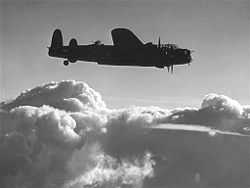RAF Little Snoring
| RAF Little Snoring | |||||||||||
|---|---|---|---|---|---|---|---|---|---|---|---|
| Near Little Snoring, Norfolk in England | |||||||||||
 | |||||||||||
 RAF Little Snoring Shown within Norfolk | |||||||||||
| Coordinates | 52°51′43″N 000°54′52″E / 52.86194°N 0.91444°ECoordinates: 52°51′43″N 000°54′52″E / 52.86194°N 0.91444°E | ||||||||||
| Type | Royal Air Force station | ||||||||||
| Site information | |||||||||||
| Owner | Air Ministry | ||||||||||
| Operator | Royal Air Force | ||||||||||
| Site history | |||||||||||
| Built | 1943 | ||||||||||
| In use | 1943-1958 | ||||||||||
| Airfield information | |||||||||||
| Elevation | 48 metres (157 ft) AMSL | ||||||||||
| |||||||||||
Royal Air Force Little Snoring or more simply RAF Little Snoring is a former Royal Air Force station located north of the Norfolk village of Little Snoring. The airfield remains open for general aviation use as Little Snoring Airfield.[1][2]
History
The station opened in July 1943[3] and was built to be a satellite station and dispersal for RAF Foulsham which is 6.0 miles (9.7 km) south-east of Little Snoring. Just a month after the station became operational, the stations status changed when No 3 Bomber Group gave the station full status.
| Squadron | Period | Aircraft |
|---|---|---|
| 23 Squadron | 1944–1945 | de Havilland Mosquito VI and XX |
| 115 Squadron | 1943[4] | Avro Lancaster II |
| 141 Squadron | 1945 | de Havilland Mosquito XXX |
| 169 Squadron | 1943–1944 | de Havilland Mosquito II |
| 515 Squadron | 1943–1945 | Bristol Beaufighter, de Havilland Mosquito II and VI |
| 1678 Heavy Conversion Flight | 1943 | Avro Lancaster II |
After this the airfield was retained on a care and maintenance until an anti-aircraft co-operation unit on civilian contract operated from Little Snoring for several years during the 1950s. Spitfires were the main type used, but were replaced by Vampires before the unit was disbanded in 1958.[5]
Current use
The site is currently used as Little Snoring Airfield, operated by the McAully Flying Group, formerly the Fakenham Flying Group. Airfield facilities include a private hangar and a clubhouse with pre-flight briefing facilities, kitchen and toilets.[6] The eastern and southern parts of all three runways have been removed but the remainder are retained for flying.
The airfield is also used for aircraft manufacturing, The Light Aircraft Company has an aircraft maintenance facility which produces the Sherwood Ranger microlite.[7]
The former mortuary is now a toilet and shower block at the villages' camp site. The site also features an air raid shelter and concrete pads for vehicles and temporary buildings.
-

The former mortuary.
References
Citations
- ↑ Moyes 1976, p. 162.
- ↑ Control Towers website (accessed 24/05/11)
- ↑ Smith, Graham (2007). Norfolk Airfields in the Second World War. Section 17 – Little Snoring – Reference to location, usage and operational timeline (Countryside Books). p. 147. ISBN 9781853063206.
- ↑ Collins and Halladay 1982, p. 35.
- ↑ http://www.the-snorings.co.uk/places/airfield/airfield.html The Snorings Website
- ↑ http://www.mcaullyflyinggroup.org/little-snoring-airfield.aspx McAully Flying Group
- ↑ http://www.the-snorings.co.uk/places/airfield/airfield.html The Snorings website
Bibliography
- Collins, Dick and Jim Halladay. Despite the Elements: The History of Number 115 Squadron, 1917-1982. Brize Norton, UK: Nettlebed Press, 1983.
- Moyes, Philip J.R. Bomber Squadrons of the RAF and their Aircraft. London: Macdonald and Jane's (Publishers) Ltd., 2nd edition 1976. ISBN 0-354-01027-1.
- Snoring "RAF Stations - L", Air of Authority - A History of RAF Organisation
External links
| ||||||||||||||||||||||||||||||||||||||||||||||
